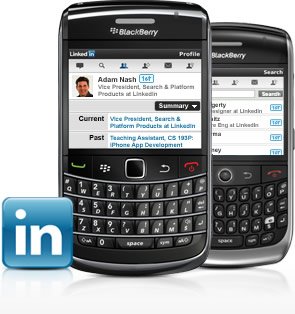In July of 2009, a State Department employee named Jim Finkle asked Hillary Clinton why they could not use Firefox as a web browser instead of Internet Explorer[i]. I feel Jim’s pain. At home I gleefully sip the Google Kool-Aid. Chrome is my browser of choice. I have an Android smart phone. I use Google Docs. My various E-mail accounts all funnel in through Gmail. I use Google for chat to keep in touch with my friends and family. My photos are viewed and organized using Picasa which in turn allows me to publish with a single click directly to my Picasa Web Albums. Google Desktop indexes everything on my computer automatically. When I need to search for something, I hit the Ctrl key twice to get a search prompt. I instantly get seamless search results, regardless of whether the files are on my local machine, the web, or my email. Everything at home is connected and works.

At work I use Outlook for my email. I often find myself instinctively yet futilely hitting the “R” key to respond to messages (that’s how Gmail works). I prefer Firefox to Internet Explorer—those are my two IT-approved options—but many of the internal web sites aren’t designed to work with Firefox. Ctrl-T will open a new tab within Firefox, but I can’t drag that new tab to other windows like I can with Google Chrome. Trying to access Google Docs results in a menacing red-lettered “ACCESS DENIED” screen—surely intended to let everyone around me know I’ve tried to do something wrong. Photos at work are stored in hard to manage file folders. Searching for information requires three separate efforts: one for files, one for Email, and one for the intranet. External social networking is allowed, but only after clicking “I Agree” to a message that essentially acknowledges you probably shouldn’t be doing it. Everything at work is disconnected and frustrating.

Pink’s discussion of motivation includes the fact that there must be some balance between intrinsic and extrinsic motivators. In other words, you absolutely have to pay people fairly. Doing so satisfies a need for extrinsic motivation and, more importantly, it takes the issue of money off the table[ii]. When people aren’t paid enough, the issue of money becomes a distraction to the real work of problem solving. IT tools are the same way. Not only do people need to be paid enough, but they need to have the right tools to do the job. Not providing the right tools means that the focus is no longer on the problem to be solved but on the missing resources.
In 2007 I went on a business trip for a week to Park City, Utah. The purpose of the trip was to attend a conference and training seminar on a simulation software package we had recently purchased. A week before my trip, I talked to my manager about needing to have administrative rights granted to me for my company-issued laptop. It was understood that the training was hands on and I would need the rights in order to install the software onto my computer. The request was routed through the proper channels, but the rights were not granted. The request was eventually escalated to senior management and finally, three days into the training, the rights were granted and I was able to install the software. Extrinsic motivation is not only about paying people enough, it’s also about providing them with access to the resources they need to get a job done. Otherwise, that stuff just gets in the way, dampening productivity and stifling innovation.
Central to a ROWE is the idea that you don’t have to be physically present to get work done. This concept relies on the implicit assumption that mechanisms exist to stay connected with your boss, other members of the team, customers, suppliers, etc. Thirty years ago, those mechanisms did not exist. Today, wireless communication technology makes it possible to stay connected in nearly every corner of the globe—usually at a reasonable cost. That capability is not always viewed as an asset. Cell phones, though quite common, are often viewed as a perk in the workplace, especially if the phone does more than just make calls.
Treating smart phones as a perk rather than a tool for increased productivity results in an army of employees equipped with technology that has the functionality to solve yesterday’s problems but is only modestly helpful today. Treating technology with the functional equivalence of a cash bonus or extravagant pleasure trip cuts into an employee’s extrinsic motivation and also hinders autonomy. Technology gives us the autonomy to be anywhere and still remain connected. Sometimes that means doing work from home, and other times it means being able to stay at work (as in the case of a business trip) while still connecting with loved ones back home. The generation gap often drives policies that contradict this autonomy, reducing productivity and innovation. Companies failing to recognize the realities of the new economy risk alienating otherwise productive employees.
Last week, at work, I needed to take a picture of a model airplane to use in a presentation I was working on. Nothing proprietary was involved, the model is the same one you could pick up at the local toy store for about twenty bucks. As recently as just a few years ago, cameras were forbidden on company property. This included any device capable of taking a picture. For years employees were left with two options: leave your camera enabled Smartphone in your car; risk facing disciplinary action if caught with it. The policy was eventually amended to allow an exception for camera-enabled devices—though their use on company property is still strictly prohibited.
The reason for the change unfortunately had little to do with wanting to empower employees with more autonomy or encourage collaboration; it simply became too difficult to purchase company phones that did not include a camera. There are a smattering of phones with the requisite use permits around my work site. Despite that fact, and despite my posession of two camera-enabled Smartphones, it was easier to simply take the model home and snap the pictures.
Another example of technology clashing with generational differences and getting in the way occurred when an employee at a company was dinged on her performance evaluation for texting during meetings. The manager, a Traditionalist, interpreted the action as a disrespectful waste of time. In actuality, the employee was texting coworkers to get answers to questions that were brought up during the course of the meeting. As a Millennial, she values multi-tasking and instant gratification[iii]. She figured, rather than wait until the meeting ends to go track down answers, why not get them right now? The mentality that assumes an employee is goofing off during a meeting because of a text message is the same mentality that causes policies against issuing smart phones or working from home. After all, how do we know company resources are being used only for productive company business?

The answer is that it doesn’t matter. The concept of a ROWE is that you want people focused on the work itself, not where the work is done, how the work is done, or the technology standing in the way of getting the work done. To solve creative problems, employees must be able to tap their need for those intrinsic motivators. Pink writes that people come out of the box wired for curiosity and self-direction[ii]. Management is a man-made concept invented by people trying to organize to solve the problem of coordination.
Jeff Gunther owns a company called Meddius that makes computer software and hardware for the healthcare industry. In 2009, he transitioned the company to a ROWE. In an interview with Daniel Pink, he said “‘management isn’t about walking around and seeing if people are in their offices’...it’s about creating conditions for people to do their best work.”[ii] If that means issuing phones with Internet access or allowing text messaging, IT policies prohibiting those things become conditions preventing people from doing their best work. In contrast to autonomy, mastery, and purpose, “thwarted satisfaction of the needs will undermine motivation and have maladaptive consequences.”[iv]
[i] Manjoo, F. (2009, August 25). Unchain the Office Computers! Why corporate IT should let us browse any way we want. Retrieved August 13, 2011, from Slate: http://www.slate.com/id/2226279/
[ii] Pink, D. (2009). Drive. Riverhead: Riverhead Books.
[iii] Graham, M. L. (2009, April). Leveraging the Power of Cross-Generational Teams. Anaheim, CA, United States of America.
[iv] Deci, E., Ryan, R., & Baard, P. (2004). Intrinsic Need Satisfaction: A Motivational Basis of Performance and Well-Being in Two Work Settings. Journal of Applied Social Psychology , 2045-2068.
